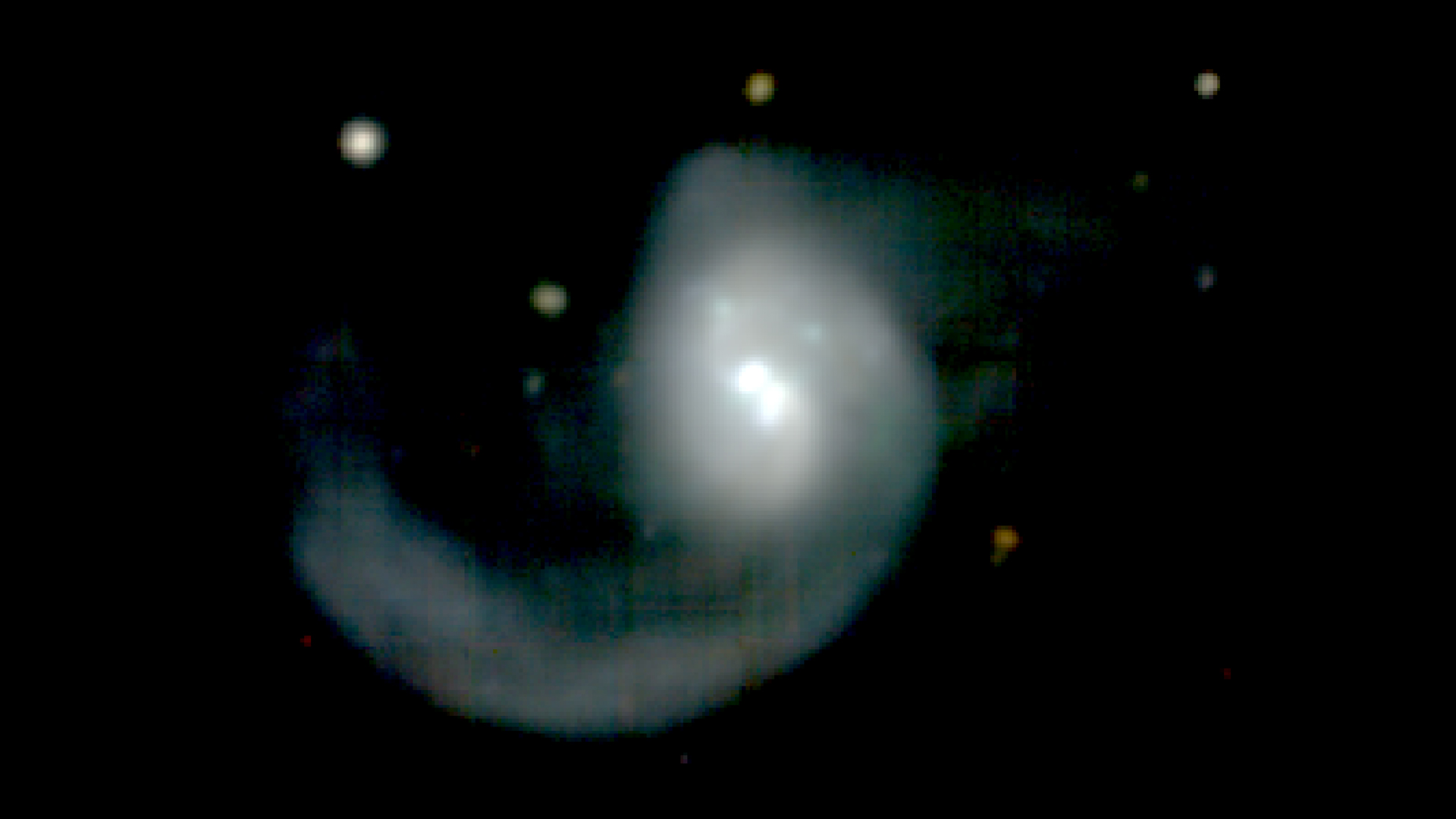Monster black hole spews energy as regularly as Yellowstone's 'Old Faithful'
Regular energy flares emerge from galaxy ESO 253-3.

At the heart of a galaxy more than 570 million light-years away, energy flares into space so consistently that astrophysicists have dubbed the galaxy Old Faithful, like the famously predictable geyser in Yellowstone National Park. This is the first time such regular and frequent flares have been spotted emanating from a distant galaxy's core.
About once every 114 days, flares emerge from the center of galaxy ESO 253-3 (the events actually took place nearly 600 million years ago, but scientists are now seeing them for the first time because of how far light from the galaxy has to travel to reach Earth).
Researchers recently counted 17 of these outbursts spanning about six years. Flares were spotted by instruments on the ground and in space, including NASA space telescopes such as the Transiting Exoplanet Survey Satellite (TESS) and the Neil Gehrels Swift Observatory, NASA representatives said in a statement.
Related: 10 huge black hole findings from 2020
The culprit behind the flares is likely the galaxy's supermassive black hole, a cosmic giant roughly 20 times the size of the black hole known as Sagittarius A* (Sgr A*) at the center of the Milky Way galaxy. To put that into perspective, Sgr A* measures about 14.6 million miles (23.6 million kilometers) in diameter, and is about 4 million times the mass of the sun.
As ESO 253-3's enormous black hole snacks on a nearby star, gases siphoned from the star collide with the black hole's debris disk to produce brilliant flares, according to research presented on Jan. 12 at the 237th meeting of the American Astronomical Society, held virtually this year. The researchers also described their discovery in a study that has not yet been peer-reviewed, published online on Sept. 7, 2020 to the pre-print database arXiv.
On Nov. 14, 2014, the first of these flares was detected — and thought to be a supernova — by researchers with the All-Sky Automated Survey for Supernovae (ASSAS-SN), a project managed by The Ohio State University's Department of Astronomy that incorporates a network of 24 telescopes worldwide, according to the ASSAS-SN project website.
Sign up for the Live Science daily newsletter now
Get the world’s most fascinating discoveries delivered straight to your inbox.
However, in 2020, scientists analyzed the last six years of ASSAS-SN data and identified more flares emerging from the galaxy at regular intervals, around 114 days apart. Based on these observations, scientists successfully predicted when subsequent outbursts would be seen in 2020: on May 17, Sept. 6 and Dec. 26. They confirmed these events with observations in multiple wavelengths from the ground and in space.

The scientists also compared ASSAS-SN's data on past flares with TESS's sky surveys, which provided more information than ASSAS-SN did about specific flare activity. For example, TESS captured "a very thorough picture" of a flare from Nov. 8, 2018, recording images as it brightened and faded over about five days, "but because of the way the mission images the sky, it can't observe all of them," study co-author Patrick Vallely, a National Science Foundation Graduate Research Fellow at The Ohio State University, said in a statement.
"ASAS-SN collects less detail on individual outbursts, but provides a longer baseline, which was crucial in this case," Vallely said. "The two surveys complement one another."
The likeliest explanation for the recurring flares is a phenomenon known as a tidal disruption, in which the orbit of a star carries it so close to a black hole that pieces of the star are ripped away and sucked into the accretion disk — a diffuse band of dust, gas and debris rotating around the black hole. Usually, such events end with the star's utter destruction. In the case of ESO 253-3, a massive star's orbit may bring it close enough to the black hole for the star to lose some of its matter, generating a flare. But then the star zips away and escapes. The cycle repeats every time the star travels close enough to the black hole to feel its inexorable pull, the researchers explained in the study.
ESO 253-3's regular and predictable emissions provided a rare window into black hole behavior and could help scientists to better understand how these mysterious cosmic objects grow and change, according to the study.
"It's really exciting, because we've seen black holes do a lot of things, but we've never seen them do something like this — cause this regular eruption of light — before," Vallely said in the statement. "It's like an extra-galactic Old Faithful."
Originally published on Live Science.

Mindy Weisberger is an editor at Scholastic and a former Live Science channel editor and senior writer. She has reported on general science, covering climate change, paleontology, biology and space. Mindy studied film at Columbia University; prior to Live Science she produced, wrote and directed media for the American Museum of Natural History in New York City. Her videos about dinosaurs, astrophysics, biodiversity and evolution appear in museums and science centers worldwide, earning awards such as the CINE Golden Eagle and the Communicator Award of Excellence. Her writing has also appeared in Scientific American, The Washington Post and How It Works Magazine. Her book "Rise of the Zombie Bugs: The Surprising Science of Parasitic Mind Control" will be published in spring 2025 by Johns Hopkins University Press.









